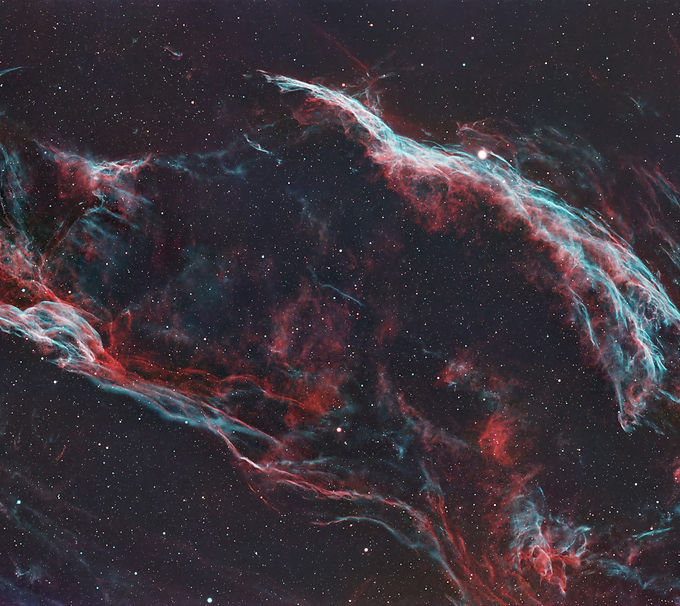
Astrophotography
Long dark nights somewhat restricts wildlife photography. I got to thinking what ither use could put my camera equipment to. And so I dived down another rabbit hole....
All photographs are my own, processed by myself.

Crescent Nebula (NGC 6888)
The Crescent Nebula (NGC 6888) or Caldwell 27 is about 5000 light years away from Earth. It is the result of a collision between the fast stellar wind from Wolf Rayet star and the slower moving wind from when the star became a red giant many hundreds of thousands of years ago. The collision results in a shell and two shock waves, one moving outwards and one inwards. The inward moving shell heats the stellar wind to in excess of 1 million degrees Celcius, causing it to emit X-rays.

Heart Nebula (IC 1805)
IC 1805 (Heart Nebula) 7,500 light years from earth, the star cluster in the middle contains stars that are 50 times the mass of the sun
Processed using what's called the Hubble palette which highlights the different gases in the nebula in different colours (H-alpha red, Sulfur-ii green, Oxygen-III blue. It is a 'false colour' but hey, if it works for NASA....

Wizard Nebula (NGC 7380)
The Wizard Nebula (NGC 7380) is about 8,000 light years away from Earth. It is very difficult to see visually and my image used an H-II and O-III filter.
Imaged on 14th August 2025

Veil Nebula (C34)
A sprawling remnant of a massive star that exploded perhaps 10 to 20 thousand years ago, the Veil Nebula is a delicate tapestry of glowing gas and fine filaments, located about 2,400 light-years away in the constellation Cygnus. This supernova remnant stretches across more than 100 light-years, its colorful wisps shaped by shock waves and interstellar winds, offering a hauntingly beautiful glimpse into the life cycle of stars.
Imaged on the night of 9th August 2025

Flaming Star Nebula (IC 405)
The Flaming Star Nebula, also known as IC 405, is a stunning emission nebula located in the constellation Auriga. Its bright, glowing gas is illuminated the nearby star AE Aurigae, which adds to the nebula's fiery appearance.

Rosette Nebula (Caldwell 49)
The Rosette Nebula, also known as Caldwell 49, is a stunning stellar nursery located in the constellation Monoceros. This vibrant region is characterized by its intricate patterns of gas and dust, illuminated by the bright young stars at its center. Spanning approximately 50 light-years across, the nebula showcases a beautiful array of colors, primarily red due to glowing hydrogen gas.

Cone Nebula and Christmas Tree Cluster
The Cone Nebula is a captivating region of star formation, located in the constellation Monoceros. Its distinct conical shape is created by dark dust lanes is close to the Christmas Tree Cluster, a collection of young stars that shine brightly against the backdrop of space.

M51 Whirlpool Galaxy
What is now known as the Whirlpool Galaxy was first observed by Charles Messier in 1773 and he designated it M51 in his catalogue.
Located approximately 27 million light-years away in the constellation Canes Venatici, this grand-design spiral galaxy is famous for its striking structure and dynamic interaction with its companion, NGC 5195.